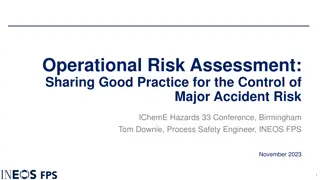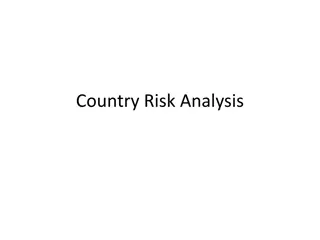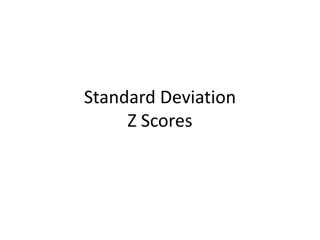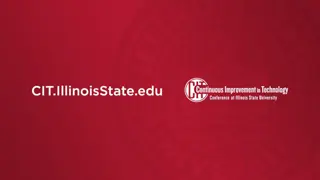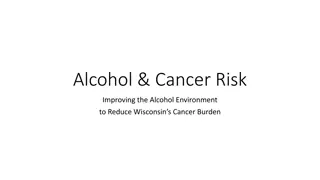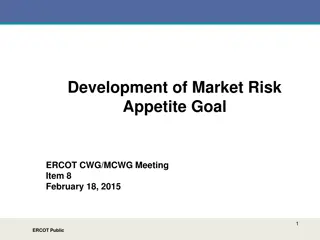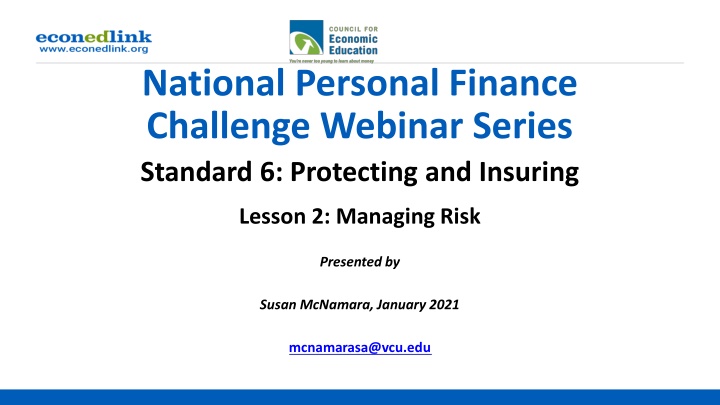
Managing Risk in Personal Finance: Insurance, Choices, and Reduction
Discover the importance of managing risks in personal finance through insurance, decision-making, and risk reduction strategies. Explore various types of insurance, assess risks in everyday situations, and learn how to mitigate potential hazards effectively. Equip yourself with valuable insights to safeguard your financial well-being and make informed decisions.
Download Presentation

Please find below an Image/Link to download the presentation.
The content on the website is provided AS IS for your information and personal use only. It may not be sold, licensed, or shared on other websites without obtaining consent from the author. If you encounter any issues during the download, it is possible that the publisher has removed the file from their server.
You are allowed to download the files provided on this website for personal or commercial use, subject to the condition that they are used lawfully. All files are the property of their respective owners.
The content on the website is provided AS IS for your information and personal use only. It may not be sold, licensed, or shared on other websites without obtaining consent from the author.
E N D
Presentation Transcript
National Personal Finance Challenge Webinar Series Standard 6: Protecting and Insuring Lesson 2: Managing Risk Presented by Susan McNamara, January 2021 mcnamarasa@vcu.edu mcnamarasa@vcu.edu
People make choices to protect themselves from the financial risk of lost income, assets, health, or identity. They can choose to accept risk, reduce risk, or transfer risk to others. Insurance allows people to transfer risk by paying a fee now to avoid the possibility of a larger loss later. The price of insurance is influenced by an individual s behavior.
Ask students what they know about insurance or if they have seen any insurance advertisements. Have students look at this picture and discuss what risk the climber is taking.
Lack of awareness Wildlife Lack of knowledge Poisonous Plants Lack of experience Dehydration Falling Equipment Failure Insufficient training Getting lost
Risk involves uncertainty and the possibility something may or may not happen. When you sign up for a school sport you run the risk of a potential injury. This Photo by Unknown Author is licensed under CC BY-NC-ND
Identify key types of insurance such as health, auto, homeowners, renter s, life, and disability. Explain the costs and benefits of purchasing key types of insurance.
Low Risk Choices High Risk Choices Riding the school bus Texting while driving Using cellphones Using drugs Eating a sandwich Riding a motorcycle Turning on a light Smoking Taking a walk Drinking Riding wild horses
Risk Reduction IncreasedRisk Riding a bike or motorcycle with a helmet reduces the risk of a head injury. Eating while driving a car may increase the potential for an accident. This Photo by Unknown Author is licensed under CC BY-SA This Photo by Unknown Author is licensed under CC BY- SA
What is meant by risk? Uncertainty about the future Why do people buy insurance? To reduce potential financial loss from risk associated with accident, theft, health, etc. What is the purpose of pooling risk? To spread risk over more than one person or incident. What is a premium? The fee paid for insurance protection.
AUTO HEALTH RENTER S HOMEOWNER S LIFE DISABILITY EXTENDED WARRANTY WORKER S COMPENSATION
Collision: provides for repair or replacement of the policy owner s care damaged in an accident. Provides financial protection against losses caused by an auto accident or other damage to a car. Liability: covers the cost of property damage or injuries to others caused by the policy owner. Comprehensive: covers the cost of damage to an auto as a result of fire, theft, or storms. Uninsured/Underinsured: covers the cost of property damage or injuries to the policy holder when the driver at fault is uninsured or underinsured to cover all the expenses related to the accident.
Traditional Health: provides reimbursement for hospital, surgical, medical, and other expenses; plans can include deductible and co- payments (20%+) Provides payment for certain health care costs including coverage for dental and vision care. HMO s: cover hospital, surgical, and medical services through a group of physicians; fees based on a monthly charge whether or not services are used. High Deductible Plans : covers hospital, surgical, and medical services through either an HMO or traditional plan; much higher deductibles in exchange for lower premiums (usually used to insure against catastrophic health events. Health Savings Accounts (HSA s): tax sheltered account where consumers can save for their medical expenses
Reimburses the policy owner for loss of possessions in a rental unit caused by fire, theft, water damage, etc. Also provides liability protection for bodily injuries of guests that occur in the rental unit. Provides financial protection in case of loss of personal possessions in a rental unit, as well as injury to others on the property.
Physical damage: reimburses for fire or water damage to the house, its contents, or other structures on the property. Protects against financial loss from damage to your home or its contents, as well as injury to others on the property. Loss or theft: reimburses for personal property damaged or stolen. Liability: protect against loss from a lawsuit for injuries to invited or uninvited guests.
Term: offer protection for a specified period of time. Cash Value Life: Combines financial protection with a savings or investment component. Cost many times more than term because of the investment feature. Three types are: Provides financial protection to dependents of policy owner when policy owner dies. Help to cover expenses such as income replacement, debt repayment, funeral expenses, and education expenses. Whole Life: provides cash value and financial protection during the lifetime of the policy holder. Universal Life: provides term policy protection with an investment feature of a whole life policy; face value can change during the time of the policy. Variable Life: similar to universal life but allows the policyholder some choice in the investments for the cash-value portion of the policy.
Policy owner selects a replacement income for lost wages if an illness or accident prevents the person from working. Provides income over a specified period of time when a person is ill and unable to work; most of these policies end at retirement age of 65-70. It is paid for a specified time after a waiting period. Disability is more important for young, single person than life insurance because the likelihood that a person in his/her 20 s will become disabled is seven times greater than his/her chance of dying.
Allows a longer time for the consumer to hold the company liable for a product such as a car, television, computer, etc. Provides a warranty on consumer goods beyond the standard warranty date. Generally offered by merchants or companies upon purchase or when the standard warranty is near to expire. Prices and length of time vary greatly Also knows as a service or maintenance agreement.
Provides benefits for employees who are injured on the job. Regulations for coverage are determined by each individual state but basic features are similar. By law, an individual is entitled to compensation and other benefits for injuries incurred at work, whether or not the employer or employee is negligent. Benefits may be paid to the family in cases of accidental death.
https://create.kahoot.it/share/choi ces-and-risks/22c589be-90e6-4336- 8ada-88fdc0d858c9 https://quizlet.com/412033177/10 2-types-of-insurance-flash-cards/
References National Standards for Financial Literacy https://www.councilforeconed.org/resource/national-standards-for- financial-literacy/#sthash.11CbykLO.dpbs Managing Risk https://www.econedlink.org/resources/managing-risk/?view=teacher Financial Fitness for Life, Lesson 10 Managing Risk
CEE Affiliates https://www.councilforeconed.org/resources/local-affiliates/



